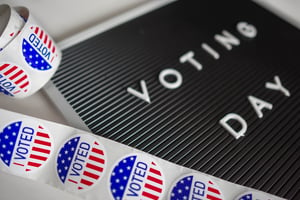Midterm Elections Yield Gains for Credit Unions
 Credit unions took initiative this election to support the people and policies that will continue to back credit union growth. According to CUNA CEO and President, Jim Nussle, credit unions invested $7 million in 338 different candidates during the 2018 midterm elections, which is the biggest contribution made by credit unions to date. These efforts helped elect a CU-friendly majority in Congress, and while this will help to advance some policy, other decisions will likely remain gridlocked. Here’s the impact credit unions can expect after a tumultuous 2018 midterm election.
Credit unions took initiative this election to support the people and policies that will continue to back credit union growth. According to CUNA CEO and President, Jim Nussle, credit unions invested $7 million in 338 different candidates during the 2018 midterm elections, which is the biggest contribution made by credit unions to date. These efforts helped elect a CU-friendly majority in Congress, and while this will help to advance some policy, other decisions will likely remain gridlocked. Here’s the impact credit unions can expect after a tumultuous 2018 midterm election.
A controversial issue that has been considered for the past several years is a new credit union taxation bill that would increase taxes by about $2 billion per year, which members and credit union leaders have vocally opposed. However, in light of the midterm elections, the likelihood of this bill getting pushed through Congress is minuscule. Now that the United States is back to a bipartisan Congress with different parties leading the House and Senate, the probability of a credit union tax bill reaching the floor is unlikely. It might be safe to say that credit unions will retain tax exemption for the next 2 years until the next general election rolls around.
The incoming Financial Services Chairman Maxine Waters is a controversial figure in the financial industry, although, she is known to be a supporter of credit unions. She has expressed that not-for-profit organizations like credit unions should be seriously considered for tax exemption. However, banks are less likely to support her policy that would increase regulations on larger financial institutions.
The next person to head up the CFPB, Kathleen Kraninger, was recently confirmed by the US Senate. She is a known advocate for decreased regulation, which the financial industry tends to view as beneficial. With her election, it’s likely FIs will see less activity and decreased regulatory burdens from the CFPB. Although this period of regulatory relief is not necessarily long-lasting. The position is up for election every 2 years, and come 2020, the industry might see a candidate with a completely different point of view heading up the CFPB.
Over the next two years, it will be interesting to see how the current leadership and newly elected officials shape policy and regulations for the financial industry. For credit unions, things are looking up. CUs stand to gain support from both the House and the Senate, with the possibility of restrictions like tax burdens and increased regulation on the decline. This year’s election was arguably one of the most anticipated and influential midterm elections that the United States has seen. Both the general population and credit unions participated at higher rates than ever seen before. Moving forward, there is certainly room for credit unions to grow and thrive in light of the new leadership.



